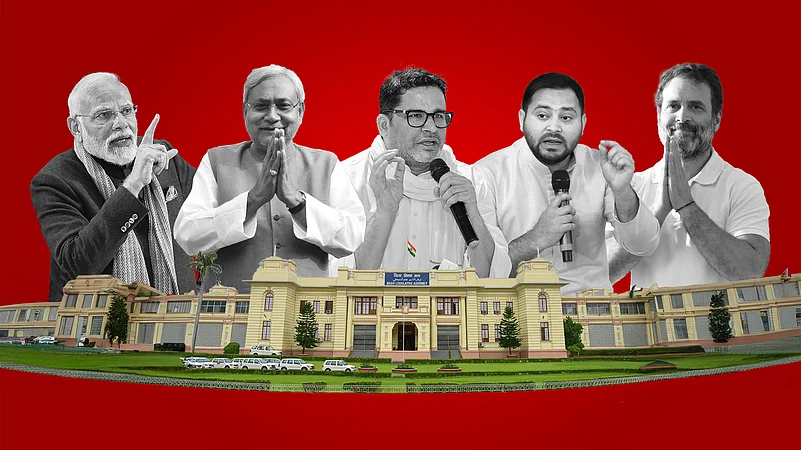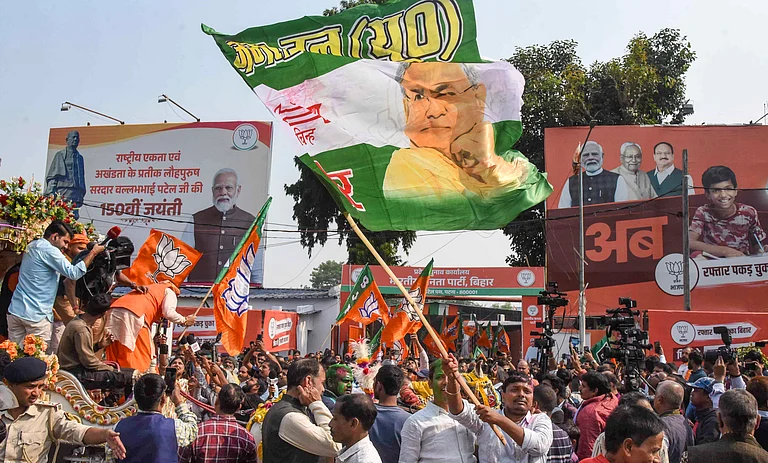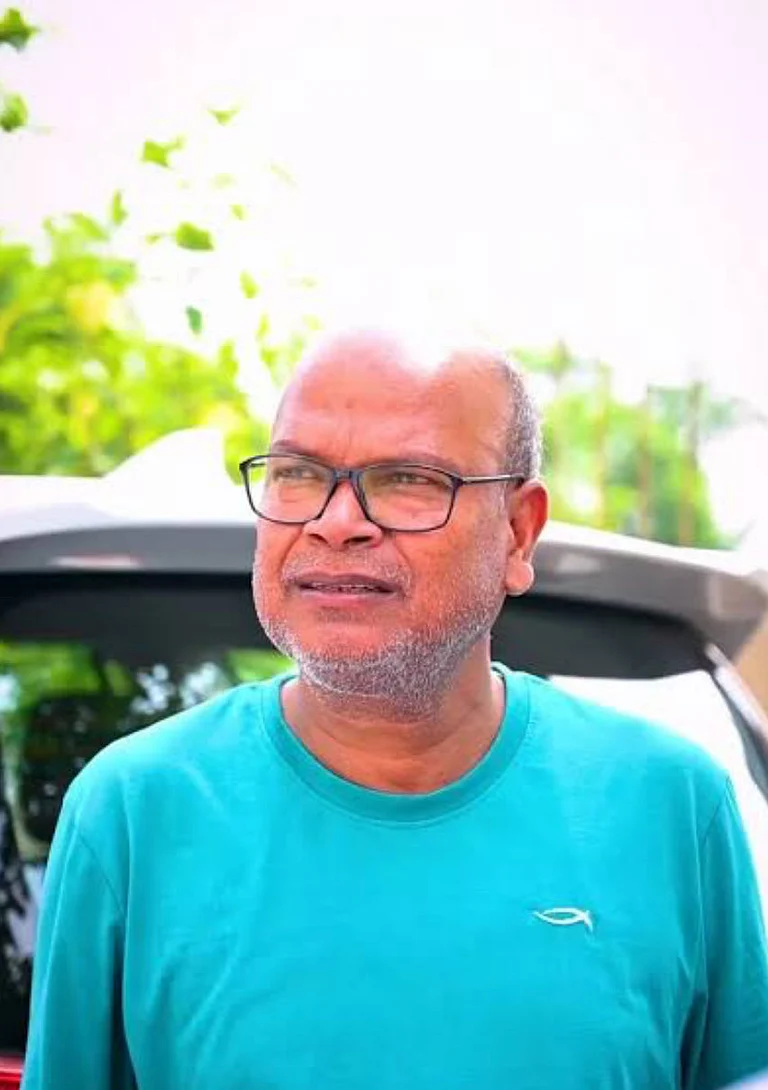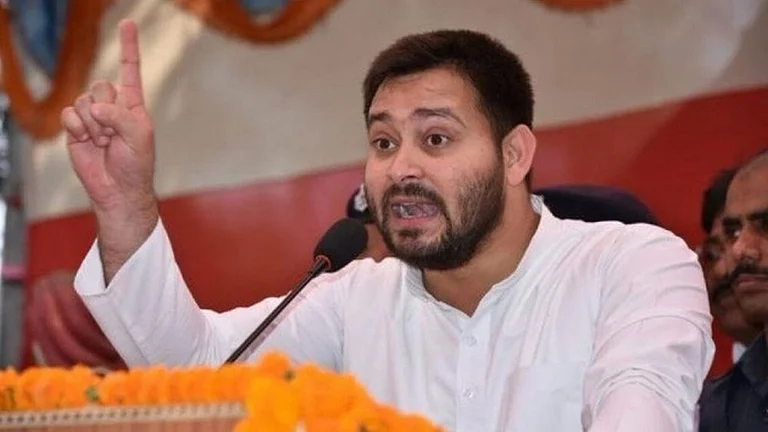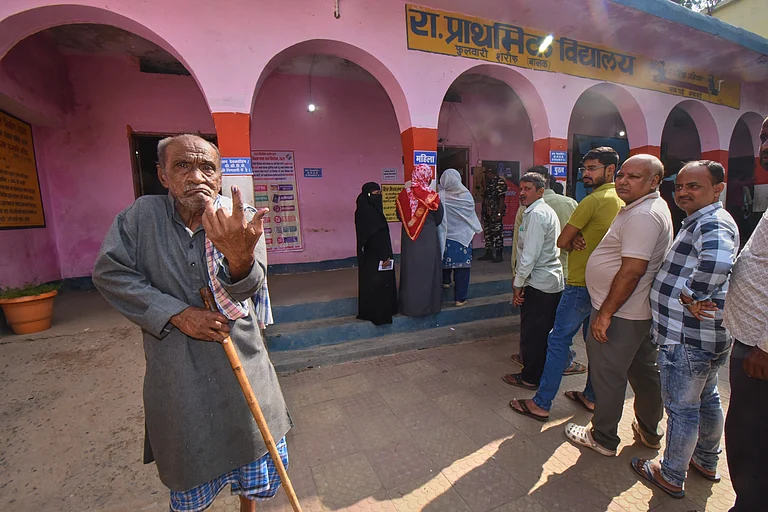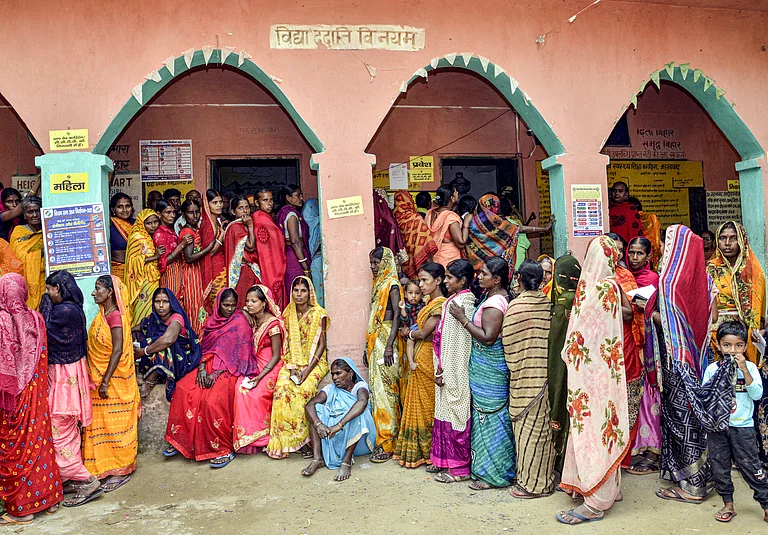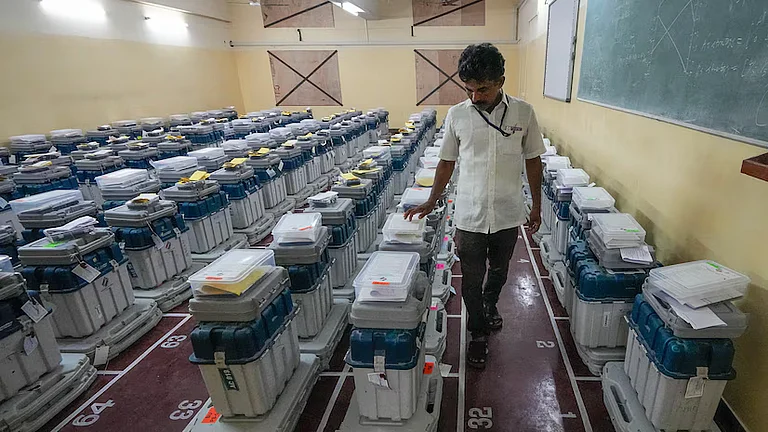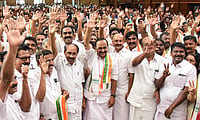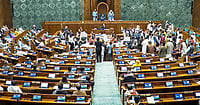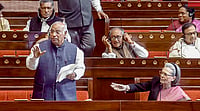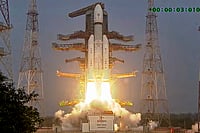
Counting is scheduled for November 14, with most exit polls projecting an NDA victory, though some suggest a closer contest with the Mahagathbandhan.
BJP highlighted the “ghuspaithiya” (infiltrator) issue, while the Mahagathbandhan emphasised youth employment, women’s financial support, and permanent jobs for Jeevika work.
The Election Commission extended the Model Code of Conduct in Patna until November 16.
Counting of votes for the Bihar Assembly elections is set to take place on Friday, November 14, following the conclusion of polling in two phases on November 6 and November 11. As the results approach, leaders of the National Democratic Alliance (NDA) are confident of a victory, while the Opposition has raised doubts about the accuracy of the exit poll predictions.
The NDA is relying on Nitish Kumar’s leadership, increased female voter participation, and welfare measures for women, particularly the most recent “Dashazari” initiative, or Mukhyamantri Mahila Rojgar Yojana. In contrast, the Mahagathbandhan’s confidence in securing victory stems from its alliances, employment agenda and the need for change.
In this election, the NDA brings together the BJP, JD(U), Chirag Paswan’s LJP (Ram Vilas), Jitan Ram Manjhi’s HAM, and Upendra Kushwaha’s RLM. The Mahagathbandhan, on the other hand, comprises seven partners — the RJD, Congress, CPI-ML, CPI, CPI-M, Mukesh Sahani’s VIP, and IP Gupta’s Indian Inclusive Party.
Ahead of and during the election campaign, the BJP pushed the “ghuspaithiya” (infiltrator) narrative, warning of a looming demographic imbalance in the state. The issue resonates strongly in Seemanchal, home to a significant Muslim population, and was highlighted in speeches by Prime Minister Narendra Modi and Home Minister Amit Shah. Yet, the Election Commission has not found any instances of infiltration in the recent electoral roll revision, raising questions over whether the BJP’s attempt to polarise the election.
The Mahagathbandhan’s campaign centred on Tejashwi Yadav’s promises of jobs for youth, Rs 30,000 for women, and permanent positions for Jeevika workers. The Congress campaign gained momentum during Rahul Gandhi’s Voter Adhikar Yatra in September, with some waves being made when he plunged into a pool with local fishermen alongside Mukesh Sahani.
Prashant Kishor’s Jan Suraaj party generated buzz among politicians and voters, but little beyond that. His biggest moment came before campaigning, when he announced he would contest against Tejashwi Yadav in Raghopur, only to later withdraw. This sparked claims of BJP influence, though nothing is confirmed. Kishor now faces significant challenges that will decide whether Jan Suraaj emerges as a genuine third force or merely a spoiler.
Bihar’s election was again marred by political violence. On October 30, Jan Suraaj Party campaigner Dularchand Yadav was killed in Mokama, Patna district, reportedly over a local rivalry involving JD(U) leader Anant Singh, named in the FIR. Four days later, just before polling, Naveen Kushwaha, brother of a local JD(U) leader, was found dead with his wife and daughter in Purnea, Seemanchal, under mysterious circumstances.
Voter Turnout in Bihar
In the first phase of voting, the turnout was 65.08 per cent, while the second phase on November 11 saw a higher turnout of 69.20 per cent.
Once polling concluded, the Election Commission of India announced that Bihar had registered a “historic high” voter turnout of 66.91 per cent, marking the highest participation in the state since 1951.
In a statement, the Election Commission confirmed that the Bihar Legislative Assembly elections had concluded with an all-time record turnout of 67.13 per cent. This is the highest voter participation ever recorded in the state. Turnout among male voters stood at 62.98 per cent, while female voter participation was notably higher at 71.78 per cent.
The Election Commission also reported that in seven districts of Bihar, female voters outnumbered male voters by 14 per cent or more. In another 10 districts, the voter turnout among women exceeded that of men by more than 10 per cent.
The Election Commission of India has extended the Model Code of Conduct in Patna district until November 16 to ensure law and order following the vote count in Bihar on November 14, according to a statement from the district administration.
The prohibitory orders, issued under Section 163 of the Bharatiya Nagarik Suraksha Sanhita (BNSS) 2023, also impose a complete ban on victory processions within the district, as reported by the ANI news agency
Election Counting Controversy
RJD leader Tejashwi Yadav held an online meeting with party candidates for the Bihar Assembly elections on Wednesday. “Last night, we had an in-depth discussion via video conference with our candidates and district organisation office-bearers, covering guidelines related to the vote counting process and preparations for it,” Tejashwi said in a post on X.
The ruling alliance is dismissing any claims of an anti-incumbency wave in Bihar, while the Mahagathbandhan asserts that their analysis suggests a change in government is imminent in the state.
Rejecting the exit polls, Tejashwi Yadav, the chief ministerial candidate for the Opposition, stated that voters had “stood in long queues, even until six or seven in the evening.” He also pointed out that the exit polls began to appear “while voting was still underway”.
The Rashtriya Janata Dal (RJD) has raised concerns over an incident in which the party claims a truck “allegedly loaded with EVMs” was covertly brought into the counting centre in Sasaram by the district administration, without prior notice or transparency. In a post on its official X account, the RJD questioned, “Why were the truck drivers allowed to leave without facing justice? Why was the CCTV footage here switched off from 2 pm onwards?”
The party has demanded the release of the “full footage” and called on the administration to clarify the contents of the truck. The post included visuals showing people gathered outside the locked gates of the centre, shouting, with a truck parked inside.
Union Minister Giriraj Singh, a day before the vote counting in Bihar, claimed that the NDA would secure more seats in this year’s Assembly elections than the 206 seats it won in 2010.
He also took a swipe at the leaders of the Mahagathbandhan. “Whether it's Akhilesh Yadav, Lalu Yadav, Tejashwi Yadav, or Rahul Gandhi, why would anyone vote for these people in Bihar?” he remarked.
What do the exit polls predict?
Most exit polls have predicted a significant victory for the BJP-JDU-led NDA, with forecasts ranging from 121 to 209 seats. These polls suggest that the Mahagathbandhan will likely come in second, with an estimated 32 to 118 seats. The majority mark in Bihar's 243-member Assembly is 122 seats.
However, the Axis My India projection, released on Wednesday, foresees a narrower win for the NDA, estimating a seat range of 121 to 141. The Mahagathbandhan is projected to secure between 98 and 118 seats.







